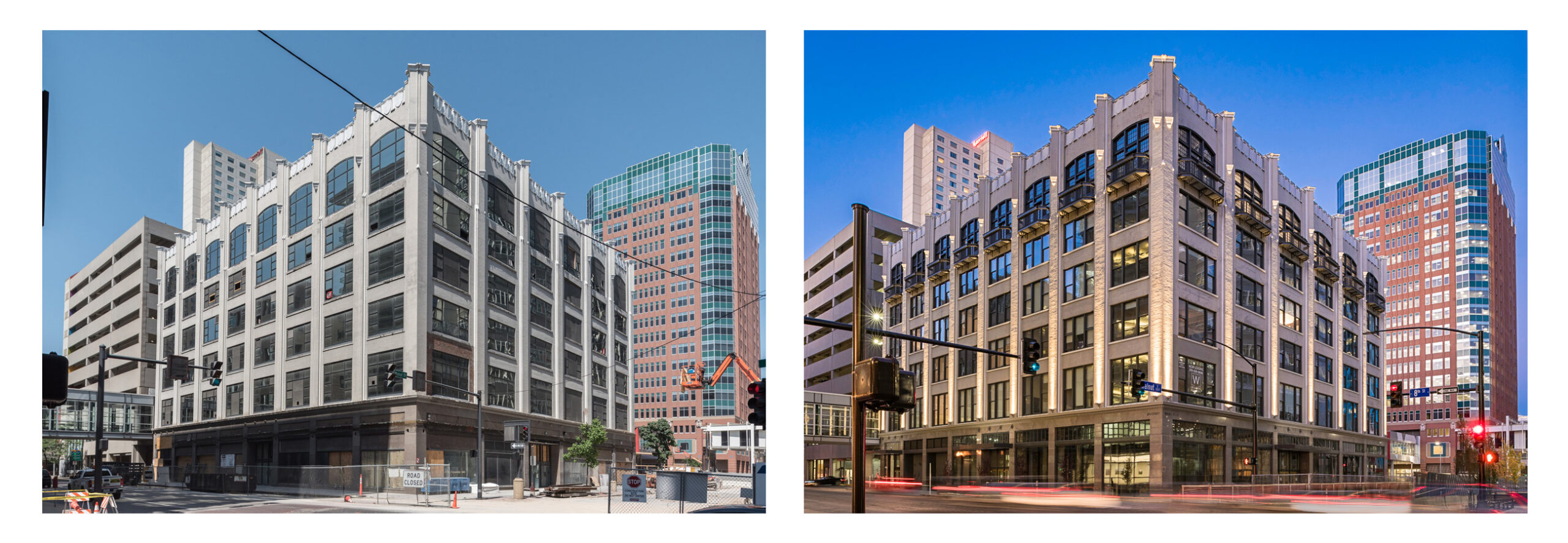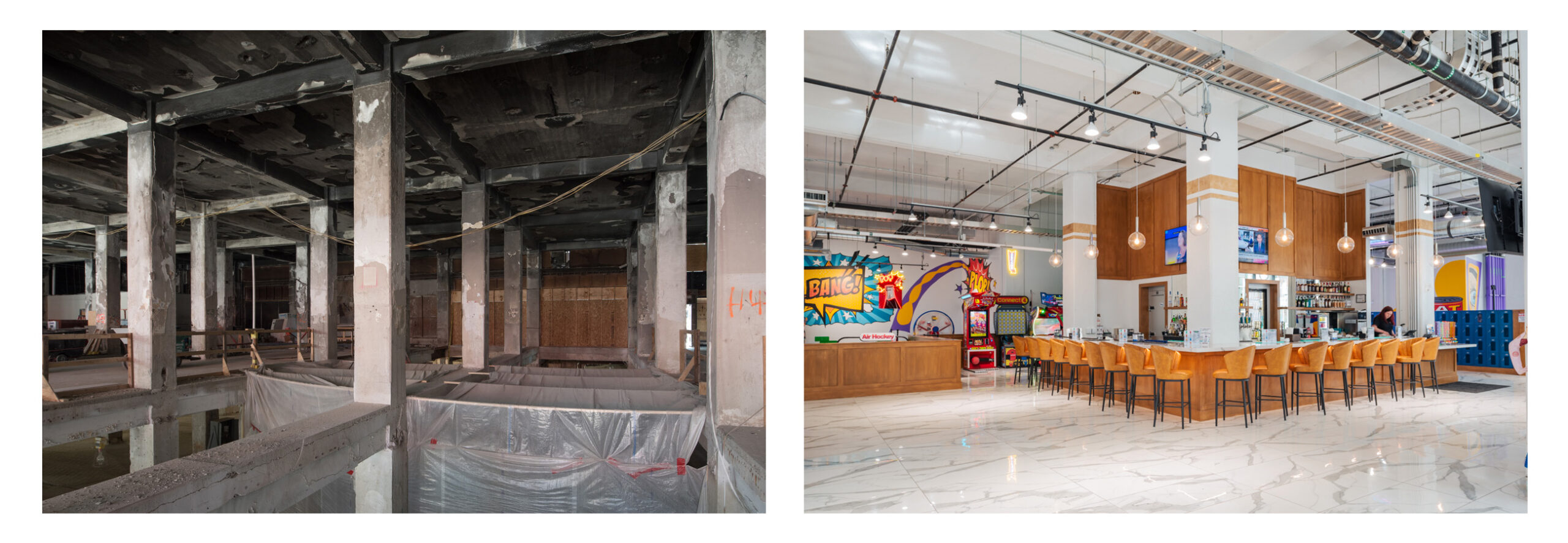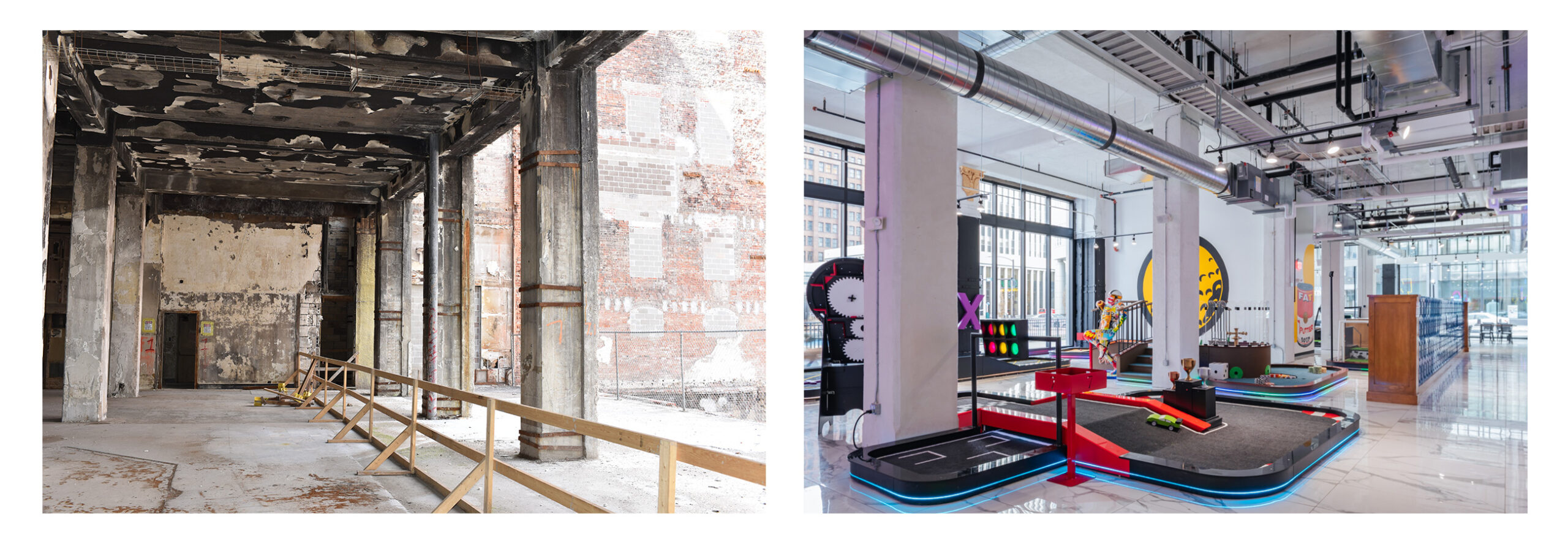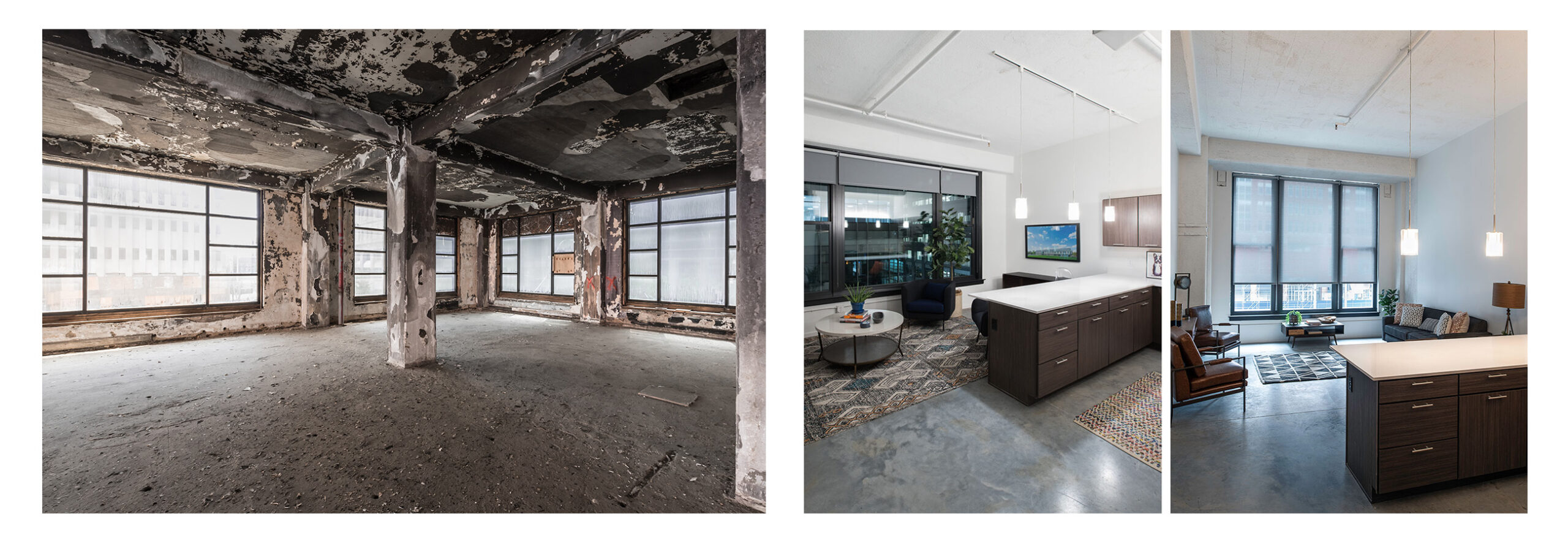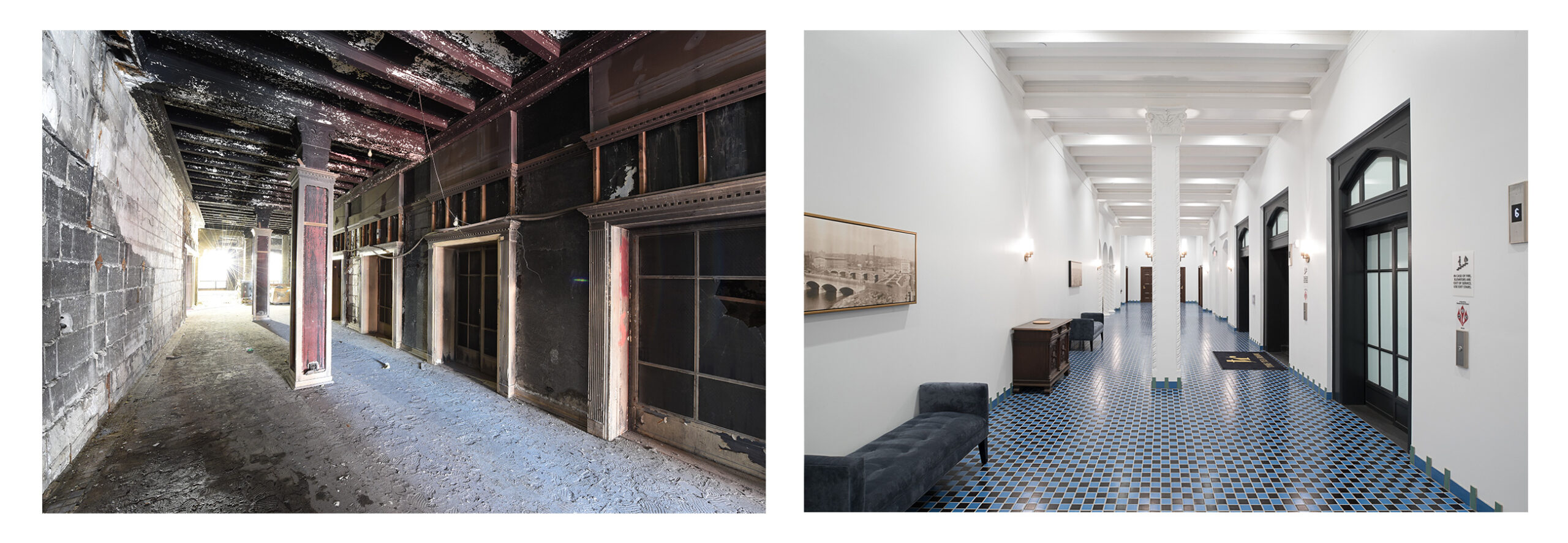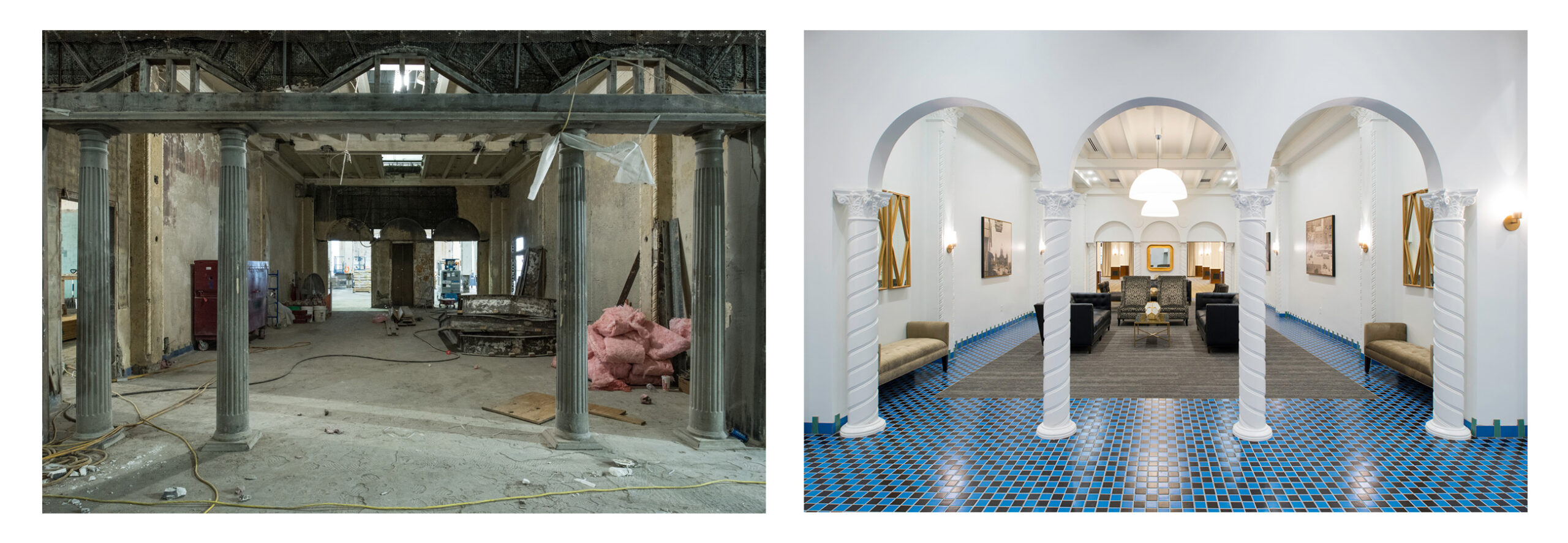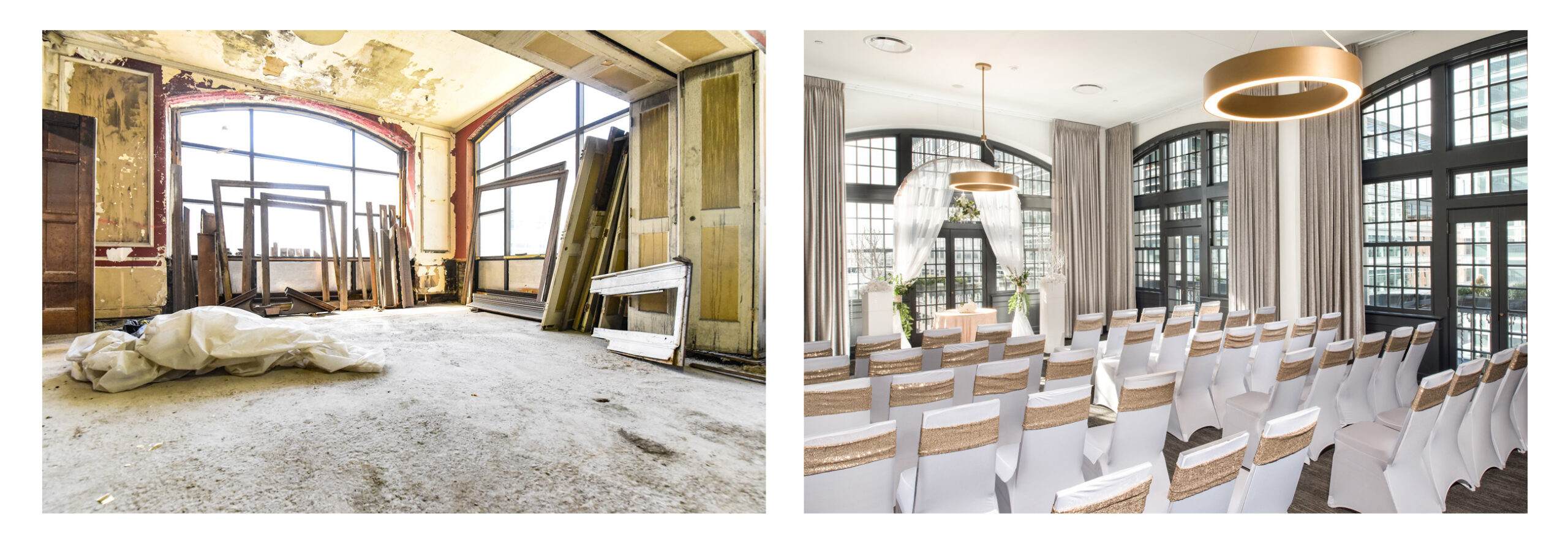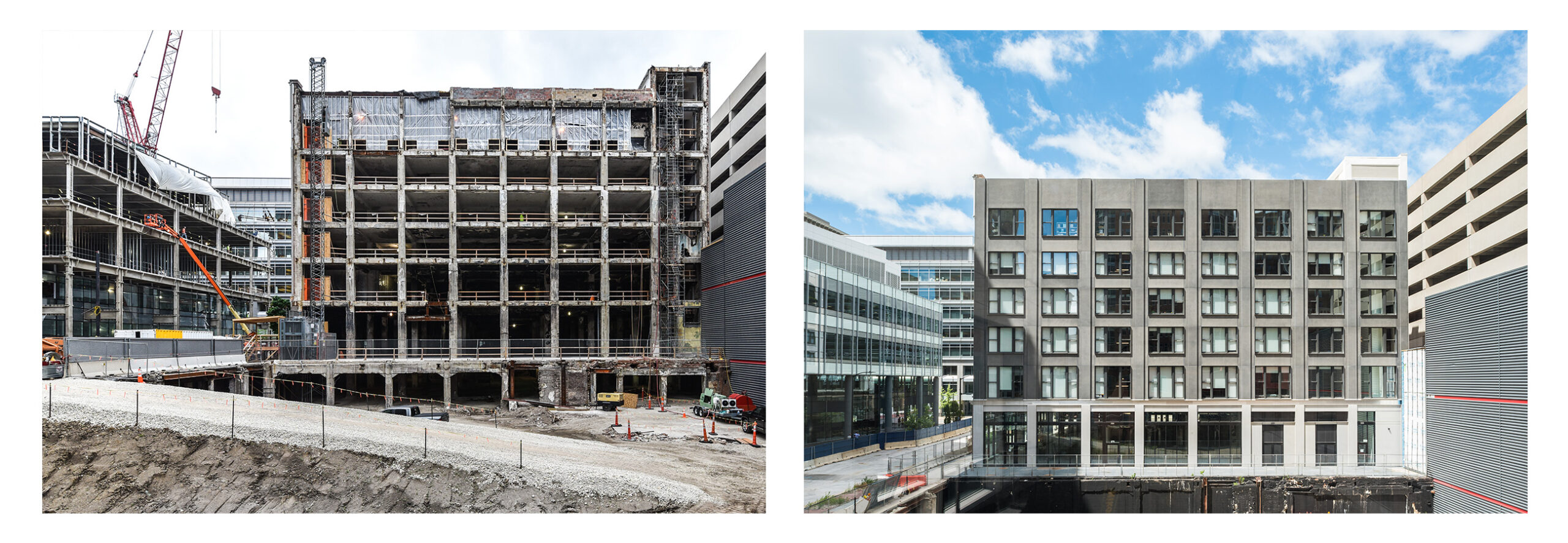
The Wilkins Building: The Process
The Journey of Building Restoration & Full Occupancy
Restoring a historic building is more than just a construction project—it’s a commitment to preserving history while adapting for the future. The Wilkins Building in downtown Des Moines, IA, is a prime example of how transformation can take years, requiring expert planning, design, and execution to reach full occupancy.
Originally constructed in the late 1890s as Wilkins Department Store, the building was later acquired by the Younkers brothers and integrated into their newly constructed department store. Wilkins stood as an architectural innovation, becoming Des Moines’ first reinforced concrete structure. It also housed the iconic Younkers Tea Room, a gathering place known for its elegance and hospitality.
However, in May 2014, a devastating fire consumed the Younkers Building, leaving Wilkins as the only remaining structure. A commitment to revitalization began in 2016, restoring the property into a mixed-use development featuring retail, commercial, and residential spaces. The completed renovation included:
- Ground-floor commercial space facing the revitalized Walnut Street
- 60 apartment units across the second to fifth floors, blending urban loft aesthetics with preserved historic elements
- The restored Younkers Tea Room, transformed into a private event venue that honors its original grandeur
Fat Putter: Wilkins at Full Occupancy
While construction of the Wilkins Building concluded years ago, full occupancy is often a long-term process, dependent on finding the right tenants to activate commercial spaces. In 2024, the final piece fell into place with the completion of Fat Putter, an indoor miniature golf lounge operated by Omaha-based Let’s Go Putt. The 11,235-square-foot venue features miniature golf and a full-service bar and lounge. The remodel, valued at $887,000, represents the final step in bringing new life to the historic Wilkins Building.
With the addition of Fat Putter, the Wilkins Building is now fully realized as a dynamic downtown destination. The completion of this final Tenant Improvement (TI) project solidifies the vision that began years ago—to transform a historic structure into a modern, multi-functional space. The presence of an engaging entertainment venue like Fat Putter enhances the building’s appeal, drawing in visitors and contributing to the energy of the surrounding area.
Tenant improvements like this require careful integration with a building’s existing infrastructure. From mechanical and electrical upgrades to spatial redesigns, each phase of development must align with the needs of the incoming occupant while maintaining the integrity of the structure. The successful completion of Fat Putter’s remodel underscores the importance of strategic planning and adaptability in long-term building revitalization.
Why MODUS?
Projects like the Wilkins Building demonstrate how restoration takes time, and a structure’s true potential is realized over the course of years. At MODUS, we don’t just design for the present—we plan for the future. Our team works to understand every aspect of a building’s systems, ensuring that when the time comes for updates, expansions, or new tenant improvements, we are the go-to experts.
Our work doesn’t stop when construction is complete. We remain engaged, providing long-term value to our clients as their needs evolve. Whether restoring historic structures, modernizing commercial spaces, or reconfiguring layouts for new tenants, MODUS is the trusted partner in every stage of a building’s life cycle.
Looking Ahead
The Wilkins Building has come full circle—from a department store to a vacant fire-damaged structure, to a thriving mixed-use hub in downtown Des Moines. Every step of the way, expert planning and design have ensured its lasting success. As we continue to support building owners and developers, our goal remains the same: to be the leading resource for innovative, efficient, and sustainable building solutions.




